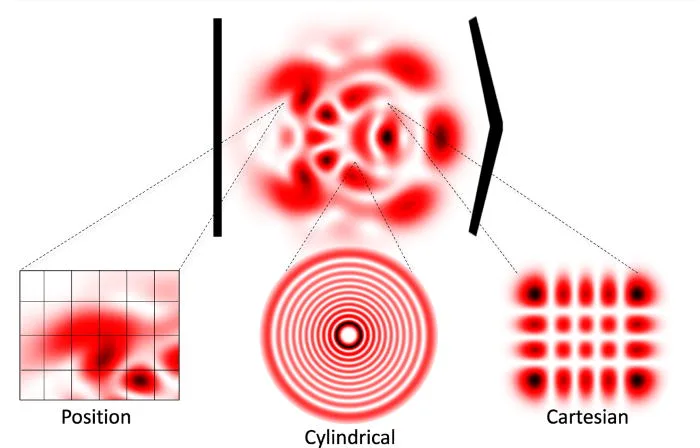Quantum cryptography, a secure communication method based on quantum mechanics principles, is evolving from two-dimensional quantum states (qubits) to higher-dimensional states (qudits). This shift offers several benefits, including higher information capacity, increased cloning fidelity, larger violations of Bell-type inequalities, and better resilience to noise. Structured light, which exploits the many degrees of freedom of photons, is becoming increasingly important in quantum cryptography. Despite advancements, challenges remain, including the need for further research in controlling spatial modes of light. The research is led by scientists from the University of the Witwatersrand and the Ecole de Technologie Superieure.
What is Quantum Cryptography with Structured Photons?
Quantum cryptography is a secure communication method that uses the principles of quantum mechanics. It allows for the establishment of a key between parties in a manner that is fundamentally secure, exploiting randomness, superpositions, and the inability to perfectly clone quantum states to secure information. This is a significant advancement in the field of cryptography, as it addresses the inherent insecurity of computational encryption.
The current state of quantum cryptography primarily uses two-dimensional (2D) quantum states, or qubits, for encryption. However, a recent drive in the field is to move beyond 2D quantum states to higher-dimensional quantum states, from qubits to qudits, with dimensions d>2. This shift to higher-dimensional quantum states offers several benefits to quantum cryptography.
What are the Benefits of Higher-Dimensional Quantum States?
The first benefit of using higher-dimensional quantum states is a higher information capacity. This means fewer photons must be sent as qudits to transmit the same information as a qubit channel. This is particularly important in entanglement-based protocols, where the minimum coincidence time window sets the maximum rate at which one can generate secure keys.
The second benefit is an upper bound on the cloning Fidelity. For qubits, the cloning Fidelity is 5/6, whereas for a very high-dimensional state, it is close to 0. This means that it is far more difficult for an eavesdropper to hack a high-dimensional state than it would be to hack a qubit state.
The third benefit is larger violations of Bell-type inequalities, which are crucial in certain Quantum Key Distribution (QKD) protocols to indicate the presence of an eavesdropper. The fourth benefit is better resilience to noise, with the cutoff purity at which a quantum state becomes separable due to isotropic noise scaling as 1/(1+d).
How is Structured Light Used in Quantum Cryptography?
Structured light, where the many degrees of freedom (DoFs) of photons can be exploited for multi-degree-of-freedom and high-dimensional quantum states, has come to the fore in quantum cryptography. This is illustrated by considering a bi-photon polarization qubit written in a specific form. The four terms are derived from the tensor product of the d=2 states of each photon. The degree of entanglement can be deduced from this.
What are the Challenges and Future Directions in Quantum Cryptography?
Despite the significant advancements in quantum cryptography, there are still open challenges. These include the need for further research and development in achieving control with spatial modes of light, both as single photons and entangled states.
The roadmap for quantum cryptography involves harnessing all of light’s degrees of freedom for multidimensional quantum coding with structured photons. This will require continued innovation and collaboration among researchers in the field and the development of commercially ready systems that can be deployed in municipal and terrestrial links.
Who are the Key Players in Quantum Cryptography Research?
The research in quantum cryptography with structured photons is being led by a team of scientists from the School of Physics at the University of the Witwatersrand in Johannesburg, South Africa, and the Department of Electrical Engineering at Ecole de Technologie Superieure in Montreal, Quebec, Canada. The team includes Andrew Forbes, Mostafa Youssef, Sachleen Singh, Isaac Nape, and Bora Ung. Their work contributes to advancing quantum cryptography and realizing a fundamentally secure quantum transfer of information.
Publication details: “Quantum cryptography with structured photons”
Publication Date: 2024-03-11
Authors: Andrew Forbes, Mostafa Youssef, Sachleen Singh, Isaac Nape, et al.
Source: Applied Physics Letters
DOI: https://doi.org/10.1063/5.0185281

